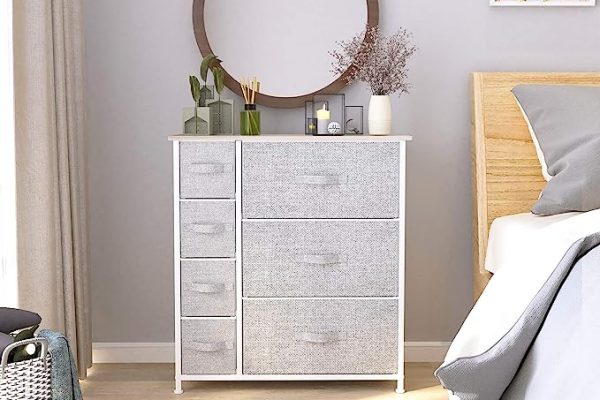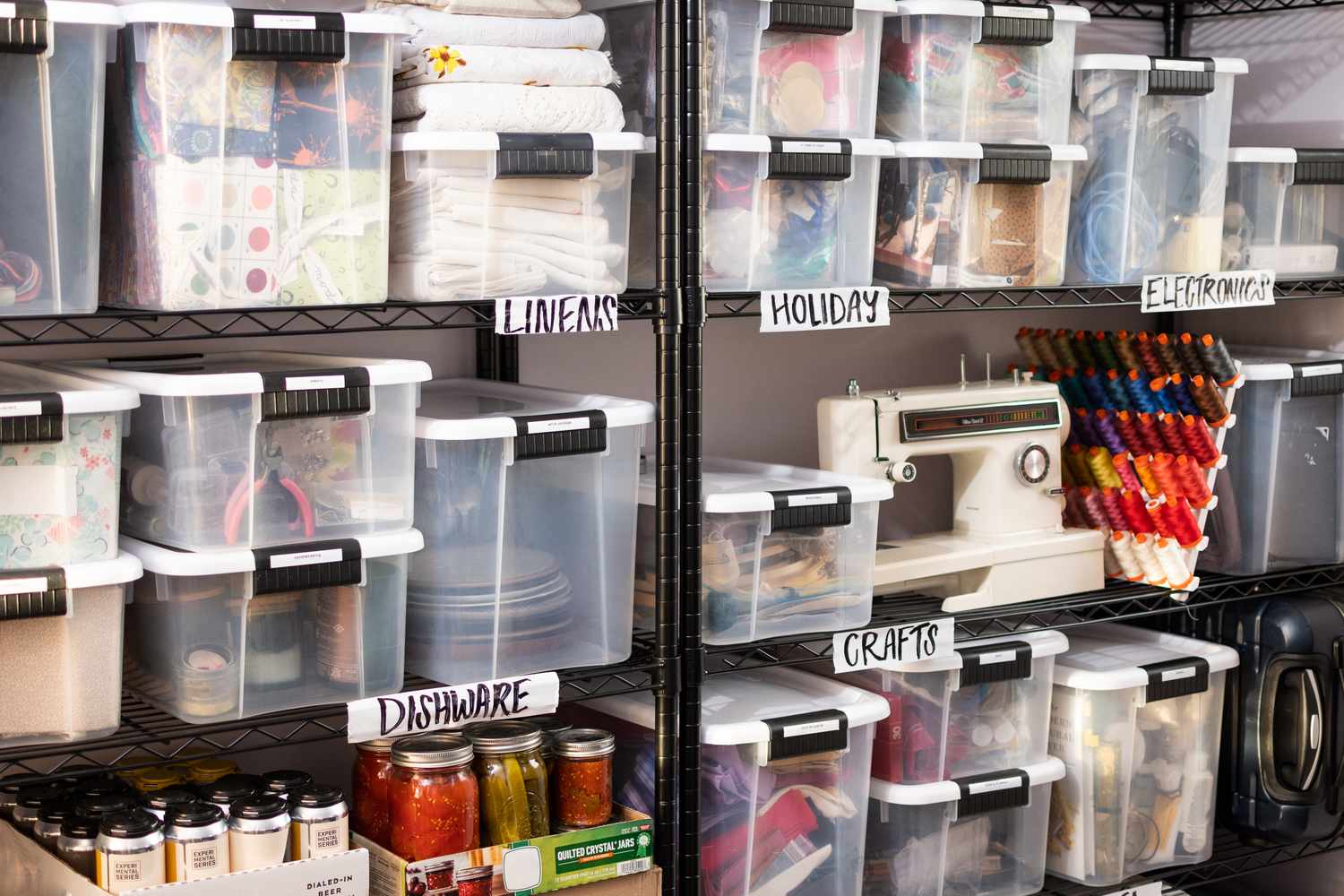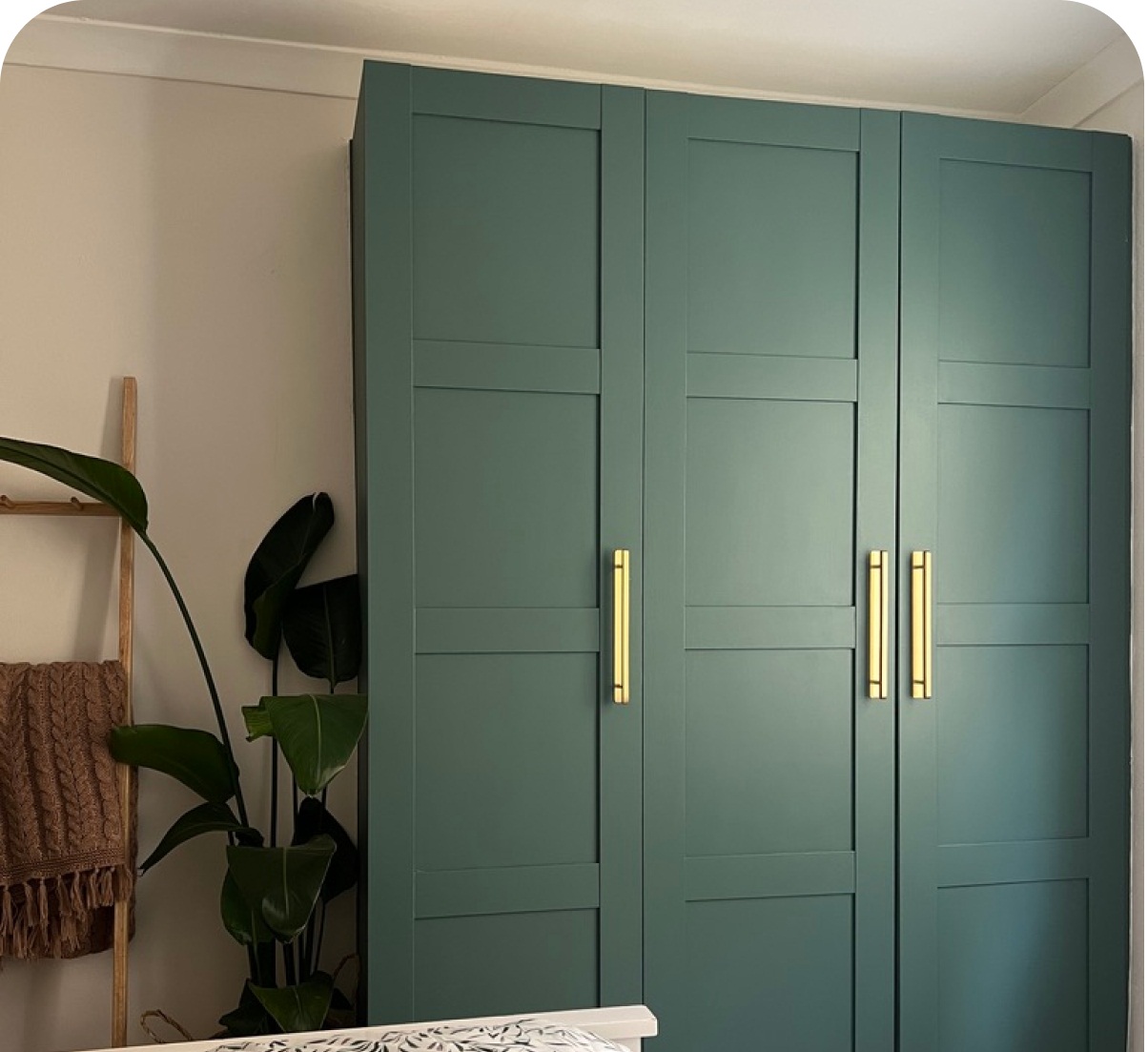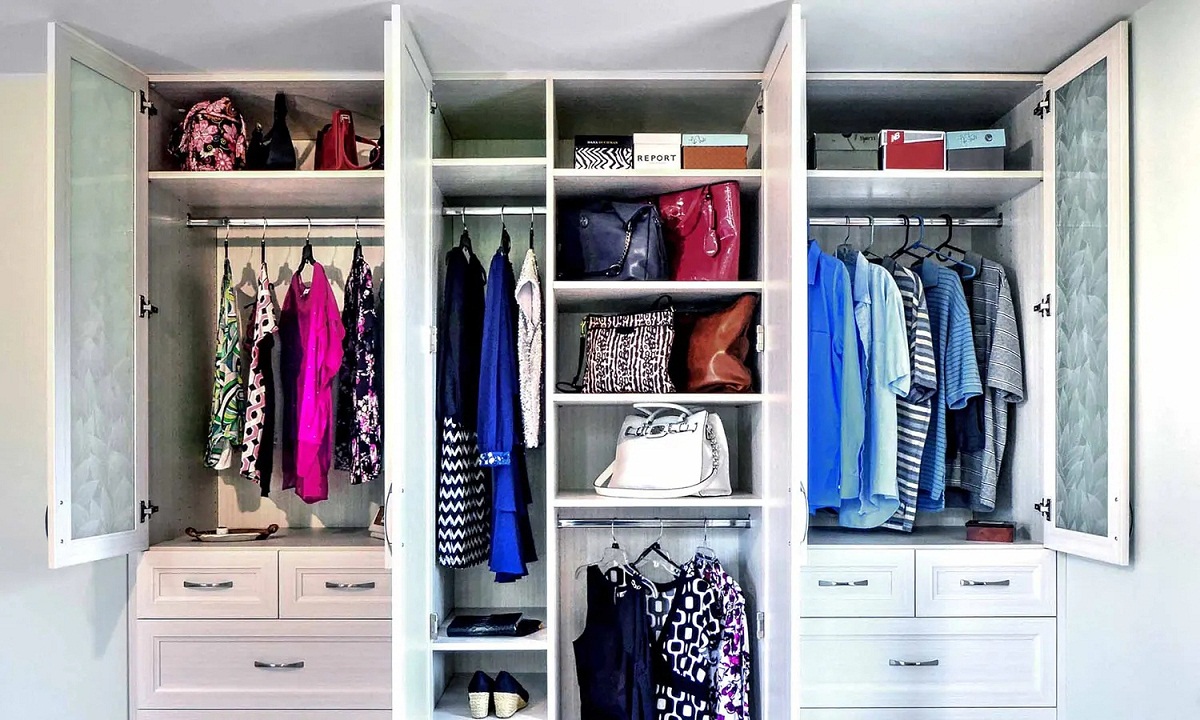Home>Garden Essentials>Garden Storage>How To Stop Clothes Smelling Damp In Wardrobe


Garden Storage
How To Stop Clothes Smelling Damp In Wardrobe
Modified: March 1, 2024
Learn how to prevent your clothes from smelling damp in your wardrobe with effective storage solutions. Keep your clothes fresh and odor-free with these helpful tips.
(Many of the links in this article redirect to a specific reviewed product. Your purchase of these products through affiliate links helps to generate commission for Storables.com, at no extra cost. Learn more)
Introduction
A damp smell in your wardrobe can be an unpleasant and frustrating issue. Not only does it make your clothes and belongings smell musty, but it can also lead to the growth of mold and mildew, potentially damaging your clothing. Understanding the causes of this damp smell and knowing how to effectively eliminate it is essential for maintaining a fresh and clean wardrobe.
The damp smell in wardrobes often occurs due to excess moisture in the air, lack of ventilation, and the presence of damp or wet clothes. When these factors combine, it creates an ideal environment for mold and mildew to thrive, resulting in the unpleasant odor.
In this article, we will explore the causes of the damp smell in wardrobes and provide you with practical tips to prevent and eliminate it. By following these recommendations, you can ensure your wardrobe remains fresh, clean, and free from unpleasant odors.
Key Takeaways:
- Prevent damp smells in your wardrobe by ensuring proper ventilation, using moisture absorbers, and incorporating natural remedies like cedar chips and lavender sachets. Regular cleaning and decluttering are also essential to maintain a fresh wardrobe environment.
- Avoid damp smells in your wardrobe by keeping clothes dry, using dehumidifiers, and harnessing the power of sunlight and fresh air. Implementing these strategies will ensure your wardrobe remains fresh, clean, and free from unpleasant odors.
Read more: How To Stop Mould In Wardrobe
Understanding the Causes of Damp Smell in Wardrobes
Before we delve into the solutions, it’s important to understand the underlying causes of the damp smell in wardrobes. By identifying the root causes, you can take targeted steps to prevent and eliminate the issue.
The primary cause of the damp smell is excess moisture in the air. This moisture can be attributed to various factors, such as high humidity levels in your home or water leaks near the wardrobe. When the air is humid, it becomes more difficult for the moisture to evaporate, leading to a damp environment.
In addition to excess moisture, lack of ventilation in your wardrobe can also contribute to the damp smell. If your wardrobe is tightly packed or has limited airflow, it restricts the movement of air, making it harder for moisture to escape. This stagnant air exacerbates the musty odor.
Furthermore, the presence of damp or wet clothes can introduce moisture into the wardrobe. If you hang up wet clothes or store damp items, the moisture can permeate the air and fabrics in the wardrobe, leading to the development of a damp smell.
Lastly, mold and mildew growth can occur in a damp environment, which further contributes to the unpleasant odor. Mold spores are microscopic and are present in the air. When they find a suitable environment, such as a damp wardrobe, they can multiply and release a musty smell.
By understanding these causes, you can now move on to implementing effective solutions to prevent and eliminate the damp smell in your wardrobe. Let’s explore some tips and techniques that will help you keep your clothes smelling fresh and clean.
Tips to Prevent Damp Smell in Wardrobes
Dealing with a damp smell in your wardrobe can be frustrating, but with the right techniques, you can effectively prevent and eliminate it. Here are some practical tips to keep your wardrobe smelling fresh and clean:
- Proper Ventilation: Ensure that your wardrobe has adequate ventilation. Keep the doors or windows open periodically to allow fresh air to circulate and moisture to escape. If possible, place a small fan near the wardrobe to improve airflow.
- Moisture Absorbers: Use moisture-absorbing products like silica gel packets, activated charcoal, or desiccant pouches to absorb excess moisture in your wardrobe. These can help prevent the growth of mold and mildew.
- Use Cedar Chips or Lavender Sachets: Cedar chips or lavender sachets act as natural repellents for pests like moths while providing a pleasant aroma. Place them in your wardrobe to deter insects and keep your clothes smelling fresh.
- Regular Cleaning and Decluttering: Regularly clean your wardrobe to remove dust, dirt, and potential sources of odor. Decluttering your wardrobe will also improve airflow and prevent the accumulation of dampness.
- Avoid Damp and Wet Clothes: Ensure that you hang up your clothes when they are completely dry. Avoid storing wet or damp clothes in your wardrobe, as they will contribute to the build-up of moisture and the development of a musty smell.
- Use Dehumidifiers: If you live in an area with high humidity or have persistent moisture issues, consider using a dehumidifier in your home. This will help reduce excess moisture in the air, keeping your wardrobe dry and odor-free.
- Keep Wardrobe Doors Open: When not in use, keep the wardrobe doors open to allow for proper airflow. This will help prevent the build-up of moisture and maintain a fresh environment inside the wardrobe.
- Sunlight and Fresh Air: Take advantage of sunny days by placing your clothes outside to air them out. Sunlight and fresh air are natural disinfectants and can help eliminate any lingering smells.
By implementing these tips, you can prevent and eliminate the damp smell in your wardrobe effectively. Remember to be proactive in maintaining a clean and dry environment to keep your clothes smelling fresh and ready to wear.
Proper Ventilation
One of the key factors in preventing a damp smell in your wardrobe is ensuring proper ventilation. Good airflow within the wardrobe helps to keep the air fresh and reduces the accumulation of moisture.
Here are some tips on how to improve ventilation in your wardrobe:
- Keep the doors open: When you’re not using the wardrobe, leave the doors open to allow air to circulate freely. This will help prevent the build-up of stagnant air and moisture.
- Install ventilation aids: If your wardrobe is located in a closed area that lacks natural airflow, consider installing ventilation aids such as air vents or mesh panels. These aids will allow fresh air to enter and promote better ventilation.
- Utilize fans: Place a small fan near the wardrobe to improve air circulation. Point the fan towards the wardrobe to help move air in and out of the space. This will help prevent moisture accumulation and keep the wardrobe smelling fresh.
Remember that proper ventilation not only eliminates the damp smell but also helps in maintaining the overall condition of your clothes. Fresh air circulation prevents the growth of mold and mildew, which can damage fabrics and lead to even more unpleasant odors.
By ensuring proper ventilation in your wardrobe, you can create a healthier and more pleasant environment for your clothes. This will not only keep them smelling fresh but also extend their lifespan.
Moisture Absorbers
To effectively combat the damp smell in your wardrobe, the use of moisture absorbers can be highly beneficial. These products are designed to absorb excess moisture from the air, helping to prevent the growth of mold, mildew, and the accompanying musty odor.
Here are a few types of moisture absorbers that you can use in your wardrobe:
- Silica Gel Packets: Silica gel packets are commonly found in various products to absorb moisture. You can place them in your wardrobe to help maintain a dry environment. Replace them as needed when they become saturated.
- Activated Charcoal: Activated charcoal is another excellent option for absorbing moisture. It also helps to eliminate odors. Simply place a few charcoal sachets or briquettes in your wardrobe, and they will work wonders in reducing dampness and keeping the air fresh.
- Desiccant Pouches: Desiccant pouches contain materials such as calcium chloride, which actively absorb moisture. They are often used in storage spaces to protect items from moisture damage. Placing desiccant pouches in your wardrobe can help absorb excess moisture and prevent the musty smell.
When using moisture absorbers, make sure to follow the instructions provided by the manufacturers. It’s important to place them in areas of the wardrobe where they can effectively absorb moisture, such as corners or near the bottom where dampness tends to accumulate.
Regularly check and replace the moisture absorbers as needed, especially during humid seasons or in damp environments. This will ensure they continue to work efficiently in maintaining a dry and fresh-smelling wardrobe.
Moisture absorbers are a simple and effective solution to prevent and eliminate the damp smell in your wardrobe. By incorporating them into your wardrobe maintenance routine, you can keep your clothes and belongings fresh and free from unpleasant odors caused by excess moisture.
Read more: How To Make A Wardrobe Smell Nice
Use Cedar Chips or Lavender Sachets
When it comes to keeping your wardrobe smelling fresh, natural remedies like cedar chips or lavender sachets can be incredibly effective. These options not only provide a pleasant scent but also act as natural repellents for pests such as moths.
Cedar chips: Cedar wood has natural aromatic properties that help to absorb moisture and keep your wardrobe smelling fresh. Additionally, cedar acts as a natural insect repellent, making it an ideal choice to protect your clothes from pests like moths. You can find cedar chips or blocks at most home improvement or storage stores. Place them in small sachets or fabric bags, and then hang or place them in different areas of your wardrobe.
Lavender sachets: Lavender is not only known for its calming scent but also for its ability to repel moths and other insects. You can make your own lavender sachets by filling small fabric bags with dried lavender flowers or purchasing pre-made ones. Simply place these sachets in your wardrobe, and they will release their pleasant fragrance while keeping pests at bay.
To maintain their effectiveness, gently squeeze or crush the cedar chips or lavender sachets every few weeks to release more of their natural scent. This will ensure that your wardrobe continues to smell fresh and that the repellent properties are maximized.
Using cedar chips or lavender sachets not only adds a delightful aroma to your wardrobe but also helps create a pleasant and inviting atmosphere when you open the doors. It’s a natural and chemical-free way to keep your clothes smelling great while also protecting them from potential damage caused by pests.
Remember to replace the cedar chips or lavender sachets periodically, especially when their scent begins to fade. This will ensure their continued effectiveness in keeping your wardrobe smelling fresh and free from unwanted odors.
Place a small bowl of baking soda or activated charcoal in the wardrobe to absorb moisture and odors. Replace it every 1-2 months.
Regular Cleaning and Decluttering
Regular cleaning and decluttering are essential for maintaining a fresh and odor-free wardrobe. Dust, dirt, and accumulated debris can contribute to the damp smell and provide a breeding ground for mold and mildew. By incorporating cleaning and decluttering into your wardrobe routine, you can prevent the build-up of moisture and keep your clothes smelling clean and fresh.
Here are some tips for effective cleaning and decluttering:
- Dust and wipe surfaces: Use a soft cloth or microfiber duster to remove dust from shelves, rods, and any other surfaces inside the wardrobe. Pay attention to corners and hard-to-reach areas where dust tends to accumulate.
- Vacuum or sweep the floor: If your wardrobe has a flooring or carpeted area, vacuum or sweep it regularly to remove dirt, dust, and other debris. This prevents them from becoming a source of unpleasant odors.
- Declutter and organize: Take the opportunity to declutter your wardrobe periodically. Remove unwanted items and donate or discard them. This will create more space, improve airflow, and reduce the chances of dampness. Organize your clothes and belongings systematically to facilitate better air circulation and prevent moisture accumulation.
- Clean garments before storage: Prior to placing clothes back in the wardrobe, ensure they are clean and fully dry. Launder or dry clean them as necessary to remove any odors or stains. Storing clean clothes helps maintain a fresh-smelling wardrobe.
In addition to regular cleaning, consider using natural cleaning agents with anti-microbial properties, such as vinegar or tea tree oil diluted in water, to wipe down surfaces. These can help prevent the growth of mold and mildew, further reducing the risk of damp smells.
Regular cleaning and decluttering not only keep your wardrobe fresh and odor-free but also make it easier to find and access your clothes. This maintenance routine ensures that the environment inside your wardrobe remains clean and dry, reducing the chances of musty odors caused by dampness and dirt.
By dedicating a little time to clean and declutter your wardrobe regularly, you’ll be rewarded with a fresh and inviting space for your clothes.
Avoid Damp and Wet Clothes
One of the key reasons for a damp smell in wardrobes is the presence of damp or wet clothes. Storing clothes that are not completely dry can introduce moisture into the wardrobe and contribute to the development of a musty odor. To prevent this, it’s important to pay attention to the moisture levels of your clothing before storing them.
Here are some tips to ensure you avoid storing damp or wet clothes in your wardrobe:
- Dry clothes thoroughly: Before hanging or folding clothes for storage, ensure that they are fully dry. Take the time to air dry them completely, either indoors or outdoors, depending on the weather conditions. Clothes that are even slightly damp can create a damp environment in the wardrobe.
- Avoid storing wet clothes: Do not store clothes that are still wet or damp from washing. Wet clothes not only contribute to the damp smell but can also lead to the growth of mold and mildew. Allow them to dry completely before placing them back into the wardrobe.
- Invest in a drying rack or clothesline: If you have space, consider using a drying rack or clothesline to effectively dry your clothes. Hanging them up allows for better airflow, which speeds up the drying process and ensures they are fully dry before returning them to the wardrobe.
- Avoid storing sweaty clothes: If you’ve worn clothes that have become sweaty, it’s best to wash them before storing them in the wardrobe. Sweat-soaked clothes can create a damp environment and unpleasant odors. Washing and drying them properly will help eliminate any lingering smells.
- Use a garment steamer or iron: If you’re in a rush and need to wear something that is slightly damp, use a garment steamer or iron to remove any remaining moisture. This helps prevent the transfer of dampness into the wardrobe and reduces the risk of a musty smell.
By ensuring that your clothes are completely dry before storing them in the wardrobe, you can effectively prevent the damp smell and maintain a fresh environment. By taking these simple precautions, you’ll not only keep your clothes smelling clean but also prevent any potential damage caused by moisture.
Remember, it’s always better to err on the side of caution and ensure your clothes are adequately dried before placing them in the wardrobe. This small step can make a significant difference in preventing the unpleasant damp smell.
Use Dehumidifiers
If you live in an area with high humidity levels or experience persistent moisture issues, using a dehumidifier in your home can be a game-changer in preventing damp smells in your wardrobe. Dehumidifiers work by reducing the moisture content in the air, creating a drier environment throughout your living space.
Here’s how using dehumidifiers can help keep your wardrobe fresh and free from damp smells:
- Reduce overall moisture: Dehumidifiers help to extract excess moisture from the air, lowering the humidity level in your home. By maintaining a lower humidity level, you can prevent the build-up of moisture in your wardrobe, thus eliminating the conditions necessary for the growth of mold and mildew.
- Protect your clothes: Excessive moisture can cause damage to your clothes, leading to unpleasant smells and even potential fabric degradation. By using a dehumidifier, you can protect your clothes from excessive moisture and keep them in good condition.
- Improve air quality: In addition to reducing moisture levels, dehumidifiers also help to filter and purify the air. This can improve the overall air quality in your home and reduce the presence of allergens and mold spores that can contribute to the damp smell in your wardrobe.
- Choose the right size: When selecting a dehumidifier, make sure to choose an appropriate size for your living space. Consider the square footage of the area you want to dehumidify to ensure that the dehumidifier is able to effectively remove excess moisture and maintain a suitable humidity level.
- Keep an eye on the humidity level: Use a hygrometer to monitor the humidity level in your home, including your wardrobe. The ideal humidity level for a wardrobe is below 50%. Adjust the dehumidifier settings accordingly to maintain the desired humidity level and prevent the damp smell.
It’s important to note that dehumidifiers require regular maintenance, such as emptying the water tank and cleaning the filter, to ensure optimal performance. Follow the manufacturer’s instructions for proper care and maintenance to prolong the lifespan and effectiveness of the dehumidifier.
By incorporating a dehumidifier into your home, you can create an environment that is less prone to moisture-related issues, including the development of a damp smell in your wardrobe. It’s an investment that will not only preserve the freshness of your clothes but also contribute to the overall comfort and well-being of your living space.
Read more: How To Stop A Compost Bin From Smelling
Keep Wardrobe Doors Open
One simple yet effective method to prevent a damp smell in your wardrobe is to keep the doors open when the wardrobe is not in use. This allows for better air circulation and ventilation, reducing the chances of moisture accumulation and subsequent odors.
Here’s why keeping your wardrobe doors open is beneficial:
- Improved airflow: By leaving the doors open, you facilitate the flow of air into and out of the wardrobe. This helps to reduce stagnant air and prevent the build-up of moisture, which can lead to a musty smell.
- Quicker drying: If you’ve recently aired out or cleaned your wardrobe, keeping the doors open allows the remaining moisture to evaporate more rapidly. This helps to maintain a dry environment, reducing the risk of odors caused by dampness.
- Reduced humidity: Open wardrobe doors allow excess humidity to disperse throughout the room rather than becoming trapped inside the confined space. This helps to maintain a balanced humidity level, preventing the growth of mold and mildew.
- Prevention of musty odors: Without proper ventilation, a closed wardrobe can provide an ideal environment for musty odors to develop. By keeping the doors open, you discourage the accumulation of dampness and reduce the likelihood of unpleasant smells.
While it may seem counterintuitive to leave your wardrobe open, especially if you are concerned about dust or pests, there are ways to mitigate these concerns while still maintaining proper airflow.
- Use breathable covers: If you have concerns about dust, you can use breathable fabric covers to protect your clothes while still allowing for air circulation.
- Apply natural repellents: Consider using natural repellents like cedar chips or lavender sachets to deter pests while the doors are open.
Remember to close the wardrobe doors when necessary, such as during cleaning or when you want to minimize dust exposure. However, as a general practice, leaving the doors open when the wardrobe is not in use will help to maintain a fresh and odor-free environment within.
By incorporating this simple habit into your wardrobe routine, you can significantly reduce the chances of a damp smell and create a more pleasant space for your clothes.
Sunlight and Fresh Air
Utilizing sunlight and fresh air is a natural and effective way to eliminate damp smells in your wardrobe. Sunlight acts as a natural disinfectant and deodorizer, while fresh air helps to improve air circulation and remove excess moisture. Incorporating these elements into your wardrobe care routine can make a significant difference in keeping your clothes smelling fresh and clean.
Here’s how you can harness the power of sunlight and fresh air:
- Hanging clothes outside: On sunny days, take advantage of the natural light and fresh air by hanging your clothes outside to air them out. Sunlight helps to kill bacteria and eliminate odors, leaving your clothes smelling fresh.
- Airing out the wardrobe: Whenever possible, open your wardrobe doors or windows to allow fresh air to circulate inside. This helps to remove stale air and moisture, which can contribute to a damp smell.
- Rotate clothes: When hanging clothes outside to air them out, consider rotating your clothing items. This allows all pieces to have exposure to sunlight and fresh air, preventing the build-up of odors in specific garments.
- Use a clothesline or drying rack: If hanging clothes outside is not an option, consider using a clothesline or drying rack near a window. Position the rack in direct sunlight, allowing the clothes to benefit from the natural disinfecting and deodorizing properties of the sunlight.
- Clean windows and mirrors: Ensure that the windows or mirrors near your wardrobe are clean to allow maximum sunlight to enter the room. Clean glass surfaces can enhance the amount of light and fresh air coming into your wardrobe space.
By harnessing the power of sunlight and fresh air, you not only eliminate damp smells but also infuse your clothes with a refreshing scent. Moreover, exposing your clothes to sunlight and fresh air can help preserve their colors and fabrics, prolonging their lifespan.
However, keep in mind that excessive exposure to direct sunlight for long periods may fade certain fabrics or colors. Exercise caution and rotate garments to ensure even exposure.
Make it a habit to incorporate sunlight and fresh air into your wardrobe care routine regularly. Not only will it keep your clothes smelling fresh, but it will also contribute to a healthier and more inviting wardrobe space.
Conclusion
A damp smell in your wardrobe can be a frustrating problem, but with the right strategies, you can prevent and eliminate it effectively. By understanding the causes of the damp smell and implementing practical tips, you can maintain a fresh and odor-free wardrobe.
Proper ventilation is crucial to prevent a damp smell. Keep your wardrobe doors open whenever possible to promote airflow and reduce moisture build-up. Consider using ventilation aids or placing a fan nearby to improve air circulation.
Moisture absorbers such as silica gel packets, activated charcoal, or desiccant pouches can help to eliminate excess moisture from the air. These products are effective in preventing the growth of mold and mildew, ultimately preventing the musty smell.
Natural remedies like cedar chips or lavender sachets not only add a pleasant aroma to your wardrobe but also act as natural pest repellents. Place them in your wardrobe to keep insects at bay and maintain a fresh scent.
Regular cleaning and decluttering are essential for keeping your wardrobe fresh. Remove dust, dirt, and unnecessary items regularly to improve airflow and reduce the chances of a damp smell. Launder your clothes before storing them to ensure they are completely dry.
Avoid storing damp or wet clothes in your wardrobe as they can contribute to the build-up of moisture and unpleasant odors. Take the time to dry clothes thoroughly before placing them in your wardrobe.
If you live in an area with high humidity levels, using a dehumidifier in your home can be highly beneficial. It helps to reduce overall moisture levels, protecting your clothes from dampness and preventing the development of a musty smell.
Keeping your wardrobe doors open allows for better airflow and ventilation, minimizing the chances of moisture accumulation. Use breathable covers or natural repellents to address concerns regarding dust or pests.
Finally, harness the power of sunlight and fresh air. Take advantage of sunny days by hanging your clothes outside to eliminate odors and benefit from the natural disinfecting capabilities of sunlight. Open windows or doors to allow fresh air to circulate within your wardrobe space.
By implementing these tips and techniques, you can create a fresh, clean, and pleasant environment in your wardrobe. Enjoy the confidence of knowing that your clothes will always be free from damp smells, ensuring they stay in excellent condition and ready for wear.
Frequently Asked Questions about How To Stop Clothes Smelling Damp In Wardrobe
Was this page helpful?
At Storables.com, we guarantee accurate and reliable information. Our content, validated by Expert Board Contributors, is crafted following stringent Editorial Policies. We're committed to providing you with well-researched, expert-backed insights for all your informational needs.














0 thoughts on “How To Stop Clothes Smelling Damp In Wardrobe”